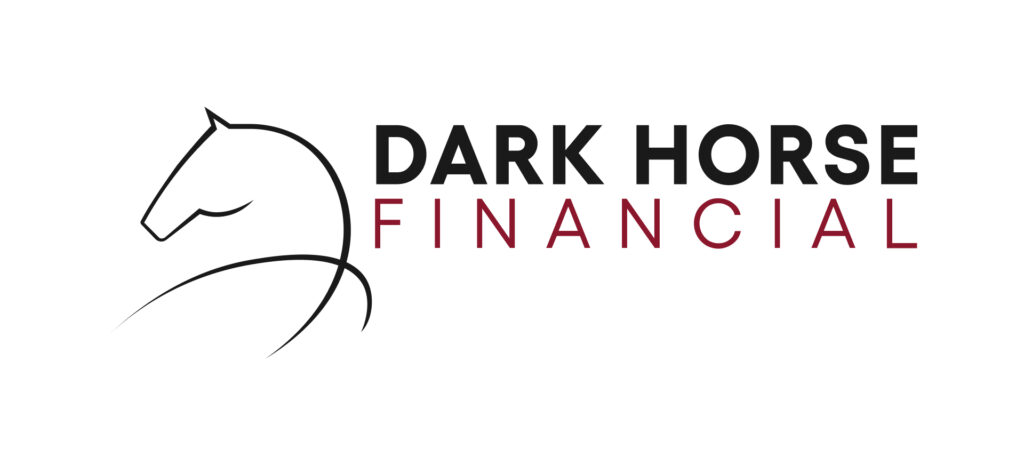Key Takeaways
- Secured loans require security and often involve a valuation as part of the refinancing process.
- Unsecured loans don’t require property backed security, making the process faster, but they usually have higher interest rates and shorter terms.
- Refinancing can be used to consolidate debt, reduce repayments, or improve cash flow.
- Many secured lenders won’t refinance private business loans, so lender selection is important for approval.
- Better-quality unsecured lenders often refuse to refinance loans from providers they consider to be high risk however an approach outside of normal credit processes can result in an approval.
- Loans with daily direct debits are rarely refinanced by unsecured lenders, and usually need to be paid out using a secured loan or equity release.
- Working with an experienced finance broker like Dark Horse Financial is essential to match the right refinancing strategy and lender to your unique circumstances.
Refinancing can be a great way for Australian businesses to reduce loan repayments, access better terms, or consolidate existing debts. However, refinancing can vary depending on whether the debt in question is secured or unsecured. Let’s explore the differences between secured and unsecured debt refinancing, the challenges borrowers may face, and how to select the right lender for a successful outcome.
What is the Difference Between Secured and Unsecured Loans in Australia?
- Secured loans are backed by security, like real estate, vehicles, or other assets. These loans typically come with lower interest rates because the lender’s perceived risk is usually seen as lower.
- Unsecured loans have no security relying on assets like property. Unsecured loans tend to have higher interest rates and shorter terms. However, approval usually comes faster because there’s no need for asset valuation and loan serviceability is calculated by a read only view of bank statements and not documents.
Refinance Secured Loan in Australia
Refinancing a secured loan usually involves replacing an existing loan with a new one, often with a better interest rate, more favourable terms, or a higher loan amount based on increased equity.
Common Reasons for Secured Loan Refinancing:
- To reduce monthly repayments through a lower interest rate
- To consolidate debts into one manageable loan
- To release equity from a property for business or investment use
- To extend the term and improve cash flow
How to Refinance a Secured Loan in Australia
To refinance a secured loan:
- Apply Online: Fill out our online form to apply for refinancing. We’ll assess your current loan and financial position to find the best solution for you.
- Formal Application: Once you select a lender and loan product, we’ll submit your application for approval.
- Loan Approval: Upon approval, the new lender will usually pay out the old loan directly.
When managed well, refinancing a secured loan can be a strategic move to strengthen your financial position and improve your business or personal cash flow.
Challenges in Refinancing a Secured Loan
A common issue in the Australian lending market is that many traditional and non-bank secured lenders will not refinance private loans.
To overcome this hurdle, selecting a broker experienced with private business lending to help you find the right lender becomes of high importance. Borrowers often need access to specialised lenders that understand private lending contexts and are willing to provide refinancing solutions.

Refinance Unsecured Loan Australia
The goal of unsecured loan refinancing is typically the same: improve terms, reduce repayments, or consolidate debt. However, there are a few nuances that make them different from secured refinancing:
Common Reasons for Unsecured Loan Refinancing:
- To reduce high-interest costs from short-term loans
- To consolidate multiple unsecured debts into one manageable repayment
- To extend the loan term to improve monthly cash flow
- To refinance out of daily direct debit loans that are impacting liquidity
Can You Refinance an Unsecured Loan?
Yes, you can. However, there is an increasing reluctance among better-standard non bank lenders to refinance unsecured loans from providers they view as “low-quality” or high risk. Loans with daily direct debits (a hallmark of high cost, short term cash flow lending) are especially difficult to refinance via other unsecured lenders. They will typically need a secured lender to pay them out, either with a capital raise or an equity release from property.
Lender Selection: Why It’s Critical
Finding the best loan refinancing lenders in Australia involves more than just comparing interest rates. Especially in complex refinancing cases, lender selection determines whether the refinance will even be approved.
For Complex Secured Loans:
- Ensure the lender is willing to refinance private or non-standard loans.
- Look for lenders who accept flexible documentation or can work with adverse credit.
- Consider non-bank lenders who specialise in bridging finance or equity release.
For Unsecured Loans:
- Avoid lenders who reject applications based on the source of your existing loan.
- Seek unsecured lenders that offer consolidation facilities or longer repayment terms.
- If direct refinancing isn’t possible, be prepared to explore a different approach.
Dark Horse Financial specialises in matching clients with appropriate lenders based on their specific refinancing challenges, helping you avoid unnecessary declines or expensive solutions.

Refinancing Secured vs Unsecured Loans in Australia
When it comes to secured vs unsecured loan refinancing, it’s important to understand how the structure of the original loan influences the refinancing process, eligibility, cost, and available lender pool.
1. Security and Risk Profile
- Secured loans are backed by tangible assets such as property, vehicles, or business equipment. This lowers the lender’s risk, making it easier to negotiate lower interest rates and longer repayment terms when refinancing.
- Unsecured loans do not require property or other assets as security. As a result, lenders assume a higher risk, and this can be reflected in higher interest rates and shorter loan terms.
2. Lender Appetite and Policy
Many mainstream lenders and non-bank secured lenders in Australia are cautious about refinancing private loans. Private loans, while flexible, may not meet the income verification or credit assessment standards of traditional lenders, which restricts refinancing options unless you work with a lender known to support transitioning away from a private lender.
On the other hand, refinancing unsecured loans is constrained by lender quality standards. A growing number of reputable non bank lenders are unwilling to refinance unsecured loans originated by lenders with aggressive repayment structures, particularly those using daily direct debits or lacking transparency in fees.
This means:
- If you’re seeking to refinance a secured private loan, you’ll need a lender who is open to reviewing non-conforming applications.
- If you’re trying to refinance an unsecured loan from a low quality lender, you may be limited to secured refinancing options, where a property or asset is used to consolidate and pay out the existing debt.
3. Interest Rates for Refinancing in Australia
- Secured loan refinancing generally allows for better terms. Lower rates and longer repayment periods are common benefits. This can be particularly valuable for businesses aiming to improve cash flow or release equity for reinvestment.
- Unsecured loan refinancing typically involves higher interest rates and shorter terms, and even then, may not offer true relief if you’re refinancing into another short-term, high-cost facility.
4. Suitability and Strategy
Refinancing a secured loan is usually more appropriate for:
- Business owners with equity in property
- Borrowers who want to transition away from private lending
- Those looking to consolidate several debts or reduce their cost of borrowing
Refinancing an unsecured loan might suit:
- Businesses with strong cash flow
- Borrowers who want to extend the term of an existing facility or reduce repayments
- Those who do not have access to suitable security for a secured loan

Refinancing Tips for Business Owners
- Know your numbers: Understand your total repayment commitments and how they affect your cash flow.
- Don’t wait too long: The earlier you act, the more options you have. Lenders may decline refinancing for loans already in arrears.
- Consolidate carefully: Consolidation can simplify repayments, but make sure the new terms genuinely save money or improve cash flow.
- Use expert guidance: A finance specialist like Dark Horse Financial can identify lender preferences, application pitfalls, and structure your loan for approval.
- Prepare an exit plan: Particularly important when using a short-term lender or bridging finance.
In Summary
Understanding the differences between secured and unsecured loan refinancing is key to making an informed decision that supports your long term financial goals.
Many secured lenders won’t refinance private loans, and many unsecured lenders won’t touch debts from low standard providers. That’s why selecting the right lender is essential. With the right lender, you can successfully refinance and put your business in a better financial position.
Refinance Your Loan Today
We understand the nuances of refinancing secured vs unsecured loans in Australia and work with a wide panel of lenders to provide tailored solutions. Whether you need to refinance a secured or unsecured loan, release equity, or escape an unfavourable loan, we’re here to help.
Disclaimer: Loans and the benefits of loan products are available to approved applicants only. Information on this page is general in nature, it does not take into account your personal situation. This information is not intended to replace professional advice and should not be relied upon for any reason. You should always seek professional advice for finance, tax and accounting matters before making a decision or taking any action.





